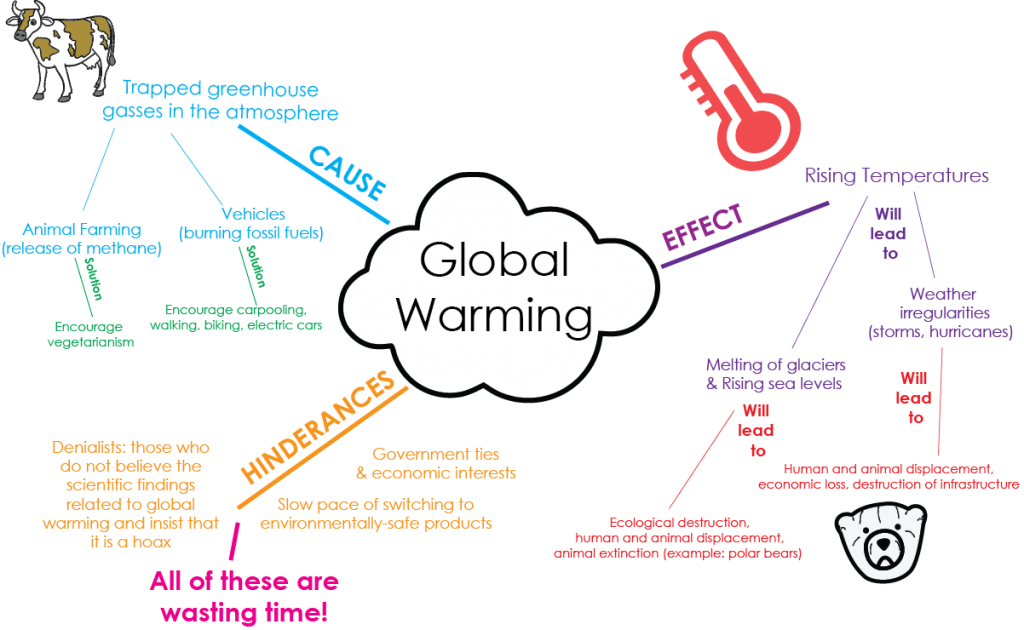23 Move Beyond Writer’s Block
Now that you understand your assignment and you have made your plan, you will want to develop your ideas and start writing. Does the blank page (or computer screen) have you stuck? To get your ideas flowing, you may want to try some of the following strategies:
- Try some free writing. Write a journal, poem, blog, or story that includes your main ideas.
- Say your ideas out loud. Talk to a friend, family member, or classmate about what you are reading and learning about your topic. You could also record these ideas into a device as if you were talking to someone else, and then play the recording back.
- Write your ideas on post-it-notes or index cards, one idea per sheet. Include the name and page of the source where you found each idea — you will need this to create your citations as you write. Then, group your notes according to themes. This will help you to create the initial organization of your paragraphs and paper.
- Create a mind map or a concept map.
Mind mapping which is also called “clustering ideas”, is a way of collecting ideas around a particular topic and defining connections. In the writing process, you use mind mapping to brainstorm ideas, and to determine how these ideas are related.[1]
The rules are: no criticism of ideas, go for large quantities of ideas, build on ideas, and encourage wild and exaggerated ideas. When these rules are followed, a lot more ideas are created. Particularly at the beginning of the writing process, you may explore a topic and generate content by creating a mind map.
Examples of Clustering and Mind Mapping
Clustering is a good way to start the process of inventing new writing but may need elaboration to be useful to the process of academic writing.
Start with what you know. This may be as little as one word. The next step is to define your word. Each part of the definition can become a new circle in your mind map.
You will ask, “Who, What Where, When, why, and How” questions to help identify what you know and / or remember about your topic.
As you make new connections, you will also see where there are gaps and what you don’t know about the topic. This can lead you to identifying what you need to research about the subject. Once you have a reasonable amount of information, you can start to develop the relationships between and among the ideas. This technique is called “Concept Mapping” and allows you to continue to elaborate on the basic ideas that you have generated. Below, you will find an example of a concept map, created by a writer exploring global warming.

Try it!
Choose one of the four strategies listed below:
- Talk about your ideas
- Spend time freewriting
- Cluster post-it notes or index cards
- Create a concept map
Now that you have begun generating your ideas, you will be ready to move on to formal outlining as your next step.
- Buzan, T. (n.d.). What is a mind map? Retrieved from http://www.tonybuzan.com/about/mind-mapping/ ↵

